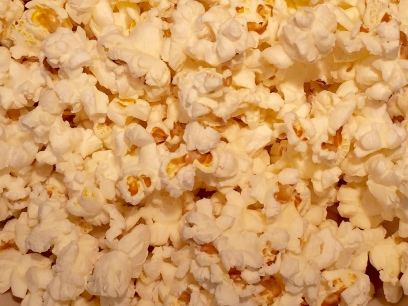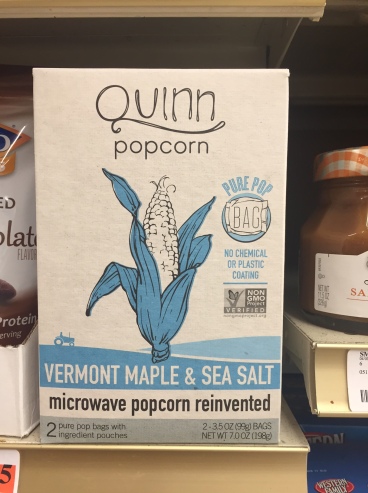Propyl gallate
Popcorn Panic or a Kernel of Truth?

Americans love their popcorn-the average person eats about 54 quarts a year…that’s equivalent to 39 bags of microwave popcorn every year! You may have heard that microwave popcorn can be hazardous to your health…and according to some internet sources… it’s an absolute health disaster! Today I will set out the facts and clear up some common misconceptions. You can decide for yourself if you would like to continue eating microwave popcorn.
I thought researching this topic would be pretty quick and easy. Not true. I dug for quite a few days, reading dozens of studies and making multiple phone calls to microwave popcorn manufacturers to get the real facts.
Remember? I read the science so you don’t have to!
Here are the health concerns most commonly unearthed in your typical internet search about the safety of microwave popcorn:
- The fake butter flavoring is nasty and dangerous.
- The bag is lined with Teflon.
- Vapors escaping from the bag are toxic.
- The preservatives are dangerous or toxic.
- Contains trans-fats.
Fake Butter Flavoring
Well, it turns out the chemical compound in “fake butter,” diacetyl, is really the same naturally occurring chemical in real butter! Organic chemists have identified dactyl as the naturally occurring compound that gives sour cream, cheese, wine and cultured butter their deep characteristic buttery aroma.1, 2 Once isolated, food companies started using it in foods as a flavor enhancer.
The problem with diacetyl does not come with eating it. The problem comes with inhaling it. Diacetyl made the headline news when employees in popcorn manufacturing plants developed a debilitating lung disease (Popcorn Lung) from chronically inhaling the aerosolized diacetyl.3, 4 Indeed, one study concludes that diacetyl can also pose a threat to consumers if they chronically breathe the vapors emanating from the freshly popped bag.5 Due to the bad press, some manufacturers started to use other butter flavorings, but if inhaled, they pose the same risk as diacetyl.6
Currently, the American Lung Association, Food and Drug Administration, and the Center for Disease Control have concluded that the butter flavoring in microwave popcorn does not pose a risk to the consumer. The Environmental Working Group rates diacetyl as the safest of food additives with a score of 1 out of 10.
To avoid inhaling diacetyl, open freshly popped bags away from your face, and if you have an exhaust fan attached to your stove, turn it on and open the bag by the fan. Wait until the popcorn has cooled to enjoy your crunchy buttery snack.
The Bag Is Lined With Teflon
Maybe. Along with microwave popcorn bags, many of the papery containers we use to store food, like takeout food, fast food wrappers, candy wrappers, pizza boxes, and “doggie bags” are lined with a chemical to keep the grease and moisture from seeping through the paper.7 This chemical can break down into a very harmful byproduct known as perfluorooctinoic acid (PFOA), the harmful chemical associated with Teflon.

PFOA is produced as the popcorn bag liner is heated and the PFOA leaches into the popcorn.8 It is also present in the vapors escaping a freshly popped bag. 9,10 One study measured the amount of PFOA that migrated into the popcorn-it was hundreds of times more than would migrate into food from non-stick pans.10 Wow!
PFOA has many deleterious health effects including bioaccumulation, endocrine disruption, birth defects in animals, cancer, neurotoxicity, and immune problems to name a few.
Because it’s so harmful, many microwave popcorn manufacturers have phased out PFOA generating liners and replaced them with other chemicals. The new chemicals (C6) are still in the same chemical family as PFOA, and appear to be less toxic because they break down easily and do not bioaccumulate. As of this writing in 2016, the available database for these compounds is fairly limited.11
Here’s the problem, the consumer can’t tell which microwave popcorn brands use these new “safe” liners. I called ConAgra, the maker of Orville Redenbacher’s and Act II microwave popcorns to find out what they used to line the bag. They phased out the use of PFOA generating liners in 2009 and now use a “perfluorinated polymer coating.” These new liners could prove to be safer, but the jury is definitely still out.
Toxic Vapors
Yes, it is true that vapors escaping a freshly popped bag of microwave popcorn can contain harmful compounds like PFOAs, volatile organic compounds and p-xylene.9, 12
The greatest chemical quantity is emitted when the bag is opened post-popping; more than 80% of the total chemical emissions occur at this time.12 So once again, if you really can’t resist microwave popcorn, open the bag in a well-ventilated area or by an exhaust fan.
The Preservatives Are Hazardous
Maybe, but you need to read the label. The most common preservatives used in microwave popcorn are citric acid (from citrus fruit), ascorbic acid (Vitamin C), propyl gallate and TBHQ (tert-butylhydroquinone). They are added to keep the oil from going rancid during storage. Of course, citric acid and ascorbic acid are safe, but what about TBHQ and propyl gallate? Neither gets a perfectly safe score from the Environmental Working Group, but are allowed in food by the FDA and the European Union.13 A recent study has indicated that propyl gallate is a mild endocrine disruptor at very low concentrations.14 Only buy the brands that use natural preservatives like ascorbic acid and citric acid.
Contains Trans-fats
Maybe. We all know the dangers of trans-fats so I don’t need to list them here. Many brands of microwave popcorn use trans-fats as the cooking oil because they are more shelf-stable. Look on the label; if it says “hydrogenated” or “partially-hydrogenated,” it contains trans-fats. Don’t buy it.

Dr. Gonzo’s Retro Solution
My family pops our own corn on the stove or microwave. Sure, it’s not as convenient, and we have an extra pan to wash, but at least I know my family is exposed to fewer dangerous chemicals and preservatives, no toxic vapors, fewer artificial colors and flavors and more healthy fats. Here are links for a stove method and a microwave method for popping your favorite corn.
Bon appetit!
